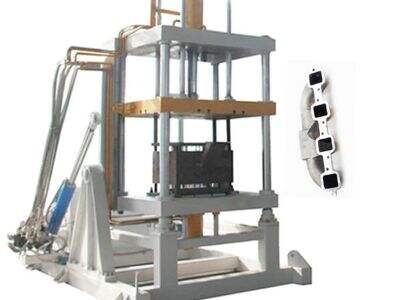The car world is an exciting place, and there's always a new trend or trick just waiting for you to uncover it. A hot topic at years ago was implicated in the low-pressure die casting process for automotive cylinder heads. It has been around for quite some time, but advancement over the past years have made it much better.
Development of Low Pressure Die Casting Techniques for Automotive Cylinder Heads
It is called low-pressure die casting (LPDC) process which creates complex engine parts like cylinder heads for cars. As the name suggests, die casting machine includes pouring molten metal into a mold at low pressure which lowers the chances of blemishes in the final product. This is a technology which has taken quite some time to catch up, but there are some new exciting developments that I thought would be worth mentioning.
Low-pressure die casting — a trend for even better process control
One of the current developments in low-pressure die casting is to use computer simulations to optimize the casting process. Using sophisticated software, engineers can anticipate how the molten metal will enter the mold and then move forward with changes to enhance it in order for it to render a better final product. This serves to reduce the time and cost of casting.
The future of automotive cylinder head production is shaped by material and process innovation
As it is, the use of new materials are a significant area of advancement in low-pressure die casting. Through the use of various alloys and metals in cast machine, engineers are able to develop cylinder heads that are stronger, lighter and more resilient than they have ever been. At the same time, it is good news for car manufacturers as they can build cars which are more safe and fuel efficient.
Not only there are new materials, processes for low-pressure die casting have been improved as well. For instance, instead of continuing to use human labour over such dangerous tasks as lifting molds and pouring molten metal, some companies are now employing robots for this purpose—thus making the precision greater than that of the master poured casted design. These improvements in continuous casting machine are already revolutionizing the way automotive cylinder heads are manufactured, faster and more efficient than ever before.
Which leads us to this; how low-pressure die casting is transforming the automotive cylinder head manufacturing process.
The production of automotive cylinder heads is being redefined thanks to the advent of low-pressure die casting. This not only enables stronger, yet lighter parts to be produced, but it also drives an environmentally friendly process. To bring the carbon footprint of car manufacturers down and towards achieving an overall more sustainable future, low-pressure die casting uses less energy and creates less waste.
The advantages of low-pressure die casting for automotive cylinder heads examined in more detail
Low-pressure die casting is the optimal method for automotive cylinder heads, which there are many advantages from using this careful process. First and foremost, it enables parts to be more accurate and of higher quality. In fact low-pressure die casting is a cost-effective choice for automotive manufacturers; it uses less material and energy to produce parts than alternative processes.
Low-pressure die casting is a very versatile process that offers high flexibility for the production of complex geometries. Car manufacturers have therefore more room in making their vehicles and this can only result in safer, faster and good looking cars that will attract more buyers.
Table of Contents
- Development of Low Pressure Die Casting Techniques for Automotive Cylinder Heads
- Low-pressure die casting — a trend for even better process control
- The future of automotive cylinder head production is shaped by material and process innovation
- Which leads us to this; how low-pressure die casting is transforming the automotive cylinder head manufacturing process.
- The advantages of low-pressure die casting for automotive cylinder heads examined in more detail



 AR
AR
 BG
BG
 HR
HR
 CS
CS
 FR
FR
 DE
DE
 EL
EL
 HI
HI
 JA
JA
 KO
KO
 PL
PL
 PT
PT
 RO
RO
 RU
RU
 ES
ES
 CA
CA
 TL
TL
 IW
IW
 ID
ID
 LV
LV
 SR
SR
 SK
SK
 SL
SL
 UK
UK
 VI
VI
 SQ
SQ
 ET
ET
 GL
GL
 HU
HU
 TH
TH
 TR
TR
 FA
FA
 AF
AF
 MS
MS
 SW
SW
 BN
BN
 LO
LO
 MN
MN
 MY
MY



